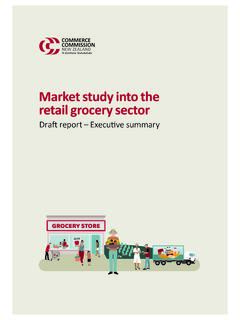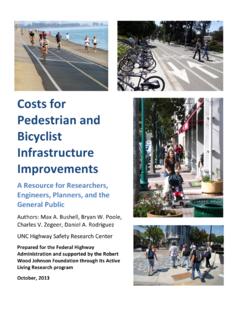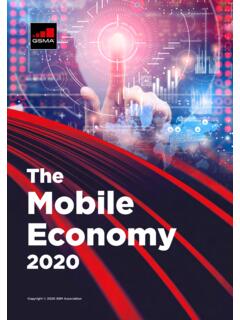Transcription of 2020 Annual Telecommunications Monitoring …
1 Annual . Telecommunications . Monitoring REPORT. 2020 Key facts Date: 16 March 2021 version 2. 2. Contents New Zealand Telecommunications snapshot statistics 4. Introduction 5. Purpose of this report 5. Background and data sources 5. Key developments in 2020 6. Fixed-line connections 7. Copper connections drop 24% 7. Households continue to drop landlines 8. Retail revenues 9. Retail Telecommunications revenue down 9. Mobile roaming revenue falls following COVID-19 related travel restrictions 10. Growth in data usage 11. COVID-19 accelerates growth in fixed broadband data usage 11. Mobile data consumption continues to grow 13. OECD price benchmarking 14. Price of high-speed fixed broadband plans drops 14. Entry level mobile plan prices steady 16. Household expenditure on Telecommunications 17. Average monthly expenditure on Telecommunications increases 17. Telecommunications expenditure as a proportion of total expenditure stable 17. Consumers concerned about the costs of telecommunication services 18.
2 Broadband speeds 19. Average broadband download speeds exceed OECD average 19. Local performance 19. Impact of COVID-19 lockdown on NZ internet performance 20. Fibre Max investigation 21. Industry investment 23. Fibre investment drops while mobile investment rises 23. Market shares 25. Fixed broadband market 25. Mobile market 26. Market Monitoring updates 27. Ongoing section 9A studies 27. Upcoming section 9A work 27. List of defined terms 28. Annual Telecommunications Monitoring Report 2020. 3. Annual Telecommunications Monitoring Report 2020. 4. New Zealand Telecommunications snapshot statistics 2010 2011 2012 2013 2014 2015 2016 2017 2018 2019. /11 /12 /13 /14 /15 /16 /17 /18 /19 /20. Total industry metrics Total Telecommunications retail revenue ($bn). Total Telecommunications investment ($bn). Fixed line metrics Fixed lines (mil) Total fixed broadband connections (mil). Fixed line broadband connections per 100 population Fixed monthly data use per 10 18 26 32 48 69 117 172 207 284.
3 Broadband connection (GB). Fixed wireless (000's) 39 31 26 24 20 27 122 165 191 221. Copper broadband lines 1076 1169 1237 1273 1270 1171 976 806 620 487. (000's)a UFB (government sponsored - 1 10 39 106 241 413 605 821 1004. fibre) lines (000's)b Chargeable fixed voice call minutes (bn). Total fixed line retail revenues ($bn). Mobile metrics Mobile connections (mil)c Active mobile connections per 119 122 119 124 127 129 134 131 122 122. 100 population Share mobile pre-paid (%) Average monthly mobile data usage (GB). Mobile voice call minutes (bn) SMS messages sent (bn) Total mobile retail revenues ($bn). a Data from Chorus b Data from Crown Infrastructure Partners (CIP). c Prepay connections for all years are counted as those active in the prior 6 months. Annual Telecommunications Monitoring Report 2020. 5. Introduction Purpose of this report This is the Commerce Commission's (Commission) 14th Annual Telecommunications market Monitoring report. This report presents key industry metrics and longer-term Telecommunications historical trends in New Zealand for 2020.
4 This report is released under section 9A of the Telecommunications Act 2001 (the Act). Section 9A requires us to monitor competition in, and the performance and development of, Telecommunications markets. This Monitoring report is additional to our Monitoring associated with specific determinations and information disclosure. Background and data sources Since 2007, we have collected data from various sources to monitor and understand trends in New Zealand's Telecommunications markets, and to inform the industry and the public about our Each year we send a voluntary questionnaire to the industry requesting information for the financial year ending in June. The data collected in response to our 2020 questionnaire is referred to as the 2020 results in this Aggregated results from our Annual industry questionnaire are published alongside this report and are available on our ,4 Revenues and prices are expressed as nominal figures (not adjusted for inflation between years) unless otherwise indicated.
5 Connection numbers, unless otherwise indicated, refer to both residential and business connections. Where more recent industry data is available and used, the different time period is noted. We thank all the respondents who submitted data and look forward to their continued cooperation. We welcome any comments or feedback on the questionnaire and this report. 1. Telecommunications Act 2001, section 9A. 2. The data from the industry questionnaire is for the 12 months to 30 June 2020 when it is a measure of volume like minutes. Where the data is a snapshot in time such as subscriber numbers, it is the data as at 30 June 2020. 3. The data used in our report is sometimes revised by the respondents or the Commission when it appears inaccurate, an error has been made, or it was an estimate. Consequently, some prior year figures used in previous reports may have been revised. 4. market/ Annual - Telecommunications -market- Monitoring -report Annual Telecommunications Monitoring Report 2020.
6 6. Key developments in 2020. COVID-19 accelerates growth in fixed broadband data usage COVID-19 lockdowns in 2020 changed the way Kiwis worked, learned and played. This led to marked growth in fixed broadband usage. Average fixed broadband usage per month increased by 77GB this year to 284GB. This represents a growth rate of 37% compared to 2019 when the growth rate was 15%. Mobile roaming revenue falls following travel restrictions Border closures restricting travel led to total mobile roaming revenue dropping 15% to $ million in the year to 30 June 2020. Revenue from domestic customers roaming overseas fell by 20% while revenue from subscribers of overseas networks roaming in New Zealand increased 2% on 2019. Popularity of uncapped mobile plans rises In 2020, 14% of residential on-account subscribers purchased uncapped endless' or unlimited'5 mobile bundles, up from 7% in 2019. Similarly, 8% of business on-account subscribers purchased uncapped mobile bundles in 2020, up from 2% in 2019.
7 Copper connections drop 24%. In the year to 30 September 2020, total copper broadband connections dropped 24% to 441,000. This drop occurred across all variants, including higher speed VDSL. This continues the trend seen in 2019 when copper broadband connections dropped 23%. Households continue to drop landlines Households continue to move away from landlines for calling with residential landline connections down 12% on last year. Over half of household fixed line connections now have no voice service (naked broadband). 5. These uncapped data plans are not truly endless or unlimited as they are subject to fair-use terms and MNOs significantly reduce customers' speeds after a certain amount of data has been consumed. Annual Telecommunications Monitoring Report 2020. 7. Fixed-line connections Copper connections drop 24%. Figure 1: Fixed-line broadband connections by technology 1,300. 1,200. 1,100. 1,000. 900. Connections (000's). 800. 700. 600. 500. 400. 300.
8 200. 100. 0. UCLL Cable Fixed wireless VDSL. ADSL Fibre All Copper Source: Chorus, CIP, Annual Telecommunications questionnaire In the year to 30 September 2020, total copper broadband connections dropped 24% to 441,000, split between 220,000 ADSL connections, 207,000 VDSL connections, and 14,000. UCLL connections. As shown in Figure 1, this continues an ongoing trend of copper broadband connections dropping while fibre and fixed wireless broadband connections rise. From August 2021, Chorus will be able to stop supplying copper services in areas where fibre is available, provided that the consumer protections in the Commission's Copper Withdrawal Code are As at 30 September 2020, around million households and businesses were able to connect to the Ultra-Fast Broadband (UFB) fibre network with million of them having already moved to 6. The Commission published the final Copper Withdrawal Code in December 2020. The Code and Reasons Paper can be found at services/consumer-protections-for-copper -withdrawal/copper-withdrawal-code 7.
9 Crown Infrastructure Partners Quarterly Connectivity Update Q3: to 30 September 2020 . Annual Telecommunications Monitoring Report 2020. 8. The UFB2 build is ongoing and at the end of 2022, over million households and businesses, or 87% of New Zealanders, should have the ability to connect to fibre. Fixed wireless connections have increased to 221,000 up 16% from last year. As at 30 June 2020, New Zealand ranked third highest out of the OECD countries for fixed wireless broadband connections with subscriptions per 100 of population, behind the Czech Republic at and the Slovak Republic at Households continue to drop landlines Consumers are moving away from traditional landline services for calling. Landline connections (including broadband-voice bundles) have continued to decline in 2020, down 12% on last year. As shown in Figure 2 below, over half of household fixed-line connections now have no voice service (naked broadband). This situation indicates more and more households now opting to not have a home phone.
10 Figure 2: Residential fixed-lines by connection type 1,800. 1,600. 1,400. Connections (000's). 1,200. 1,000. 800. 600. 400. 200. - Voice only Broadband and voice bundle Naked broadband Total residential fixed lines Approximately a third of those households that still have a home phone are using a traditional copper phone line, with the other two-thirds of residential landlines now on newer technologies like fibre and fixed wireless. In November 2020, the Commission published the 111 Contact Code. The Code supports consumers who can no longer call 111 in a power cut because they have moved to landline technologies like fibre and fixed wireless. These technologies need a power supply in the home to work, meaning they will not work in a power cut, without an independent power source. 8. Annual Telecommunications Monitoring Report 2020. 9. Under the Code, Telecommunications service providers must tell new customers, and remind existing customers at least once a year, that their home phone may not work in a power cut.









